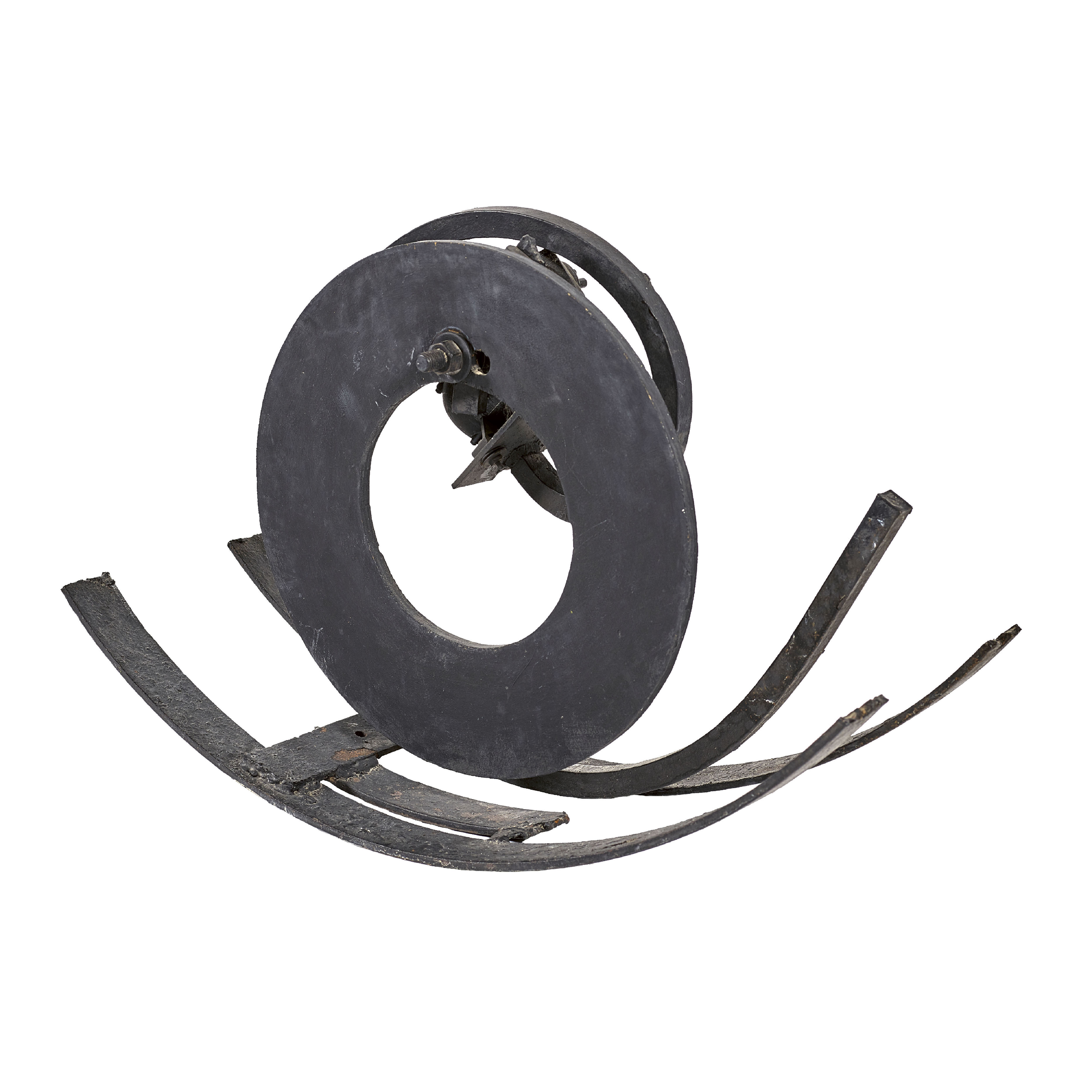"Santana No. 3".
Metall, geschweisst, Holz, Elektromotor, schwarz patiniert,
H: 55 cm, B: 85 cm, T: 33 cm
(Please scroll down for the English version.)
Provenienz: Galleria Iolas, Mailand, 1966; Galerie Bischofberger, Zürich, 1973; Privatsammlung, Schweiz; durch Erbschaft an Privatbesitz, Schweiz.
Ausstellung: Jean Tinguely, Galleria Iolas, Mailand, 1966, Nr. 13.
Literatur: Christina Bischofsberger, Jean Tinguely. Catalogue raisonné, sculptures and reliefs 1954-1968, Zürich 1982, S. 267, Nr. 399 (mit Abbildung).
Das Werk datiert aus dem Jahr 1966.
Mit der "Bascule"-Serie schuf Jean Tinguély eine Reihe von Skulpturen aus zusammengeschweissten Objets trouvés, die durch einen Elektromotor zum Wippen gebracht werden. Im Unterschied etwa zu den Anfang der 1960er Jahre entstandenen "Balubas" fügen sich die "Bascules" durch ihre oft schwarze Fassung gewissermassen zur plastischen Einheit und wirken vergleichsweise wie Skulpturen im klassischen Sinn. Ihren Namen verdankt die Serie der rhythmischen Wippbewegung, die unvermittelt an ein Perpetuum mobile denken lässt.

The work is dated 1966.
Provenance: Galerie Iolas, Paris, 1966; Galerie Bischofberger, Zurich, 1973; private collection, Switzerland; by inheritance to private property, Switzerland.
Exhibition: Jean Tinguely, Gallery Iolas, Paris, 1966, No. 13.
Literature: Christina Bischofsberger, Jean Tinguely. Catalogue raisonné, sculptures and reliefs 1954-1968, Zurich 1982, p. 267, No. 399 (illustrated).
With the "Bascule" collection, Jean Tinguély created a series of sculptures out of objects trouvés welded together, which are made to sway by the use of an electric motor. Contrary to the "Balubas" created at the beginning of the 1960s, this series of "Bascules", thanks to their often black frame, form a kind of sculptural unity and seem almost like sculptures in a classical sense. The series owes its name to the rhythmic rocking motion, which directly brings to mind a perpetual motion machine.

